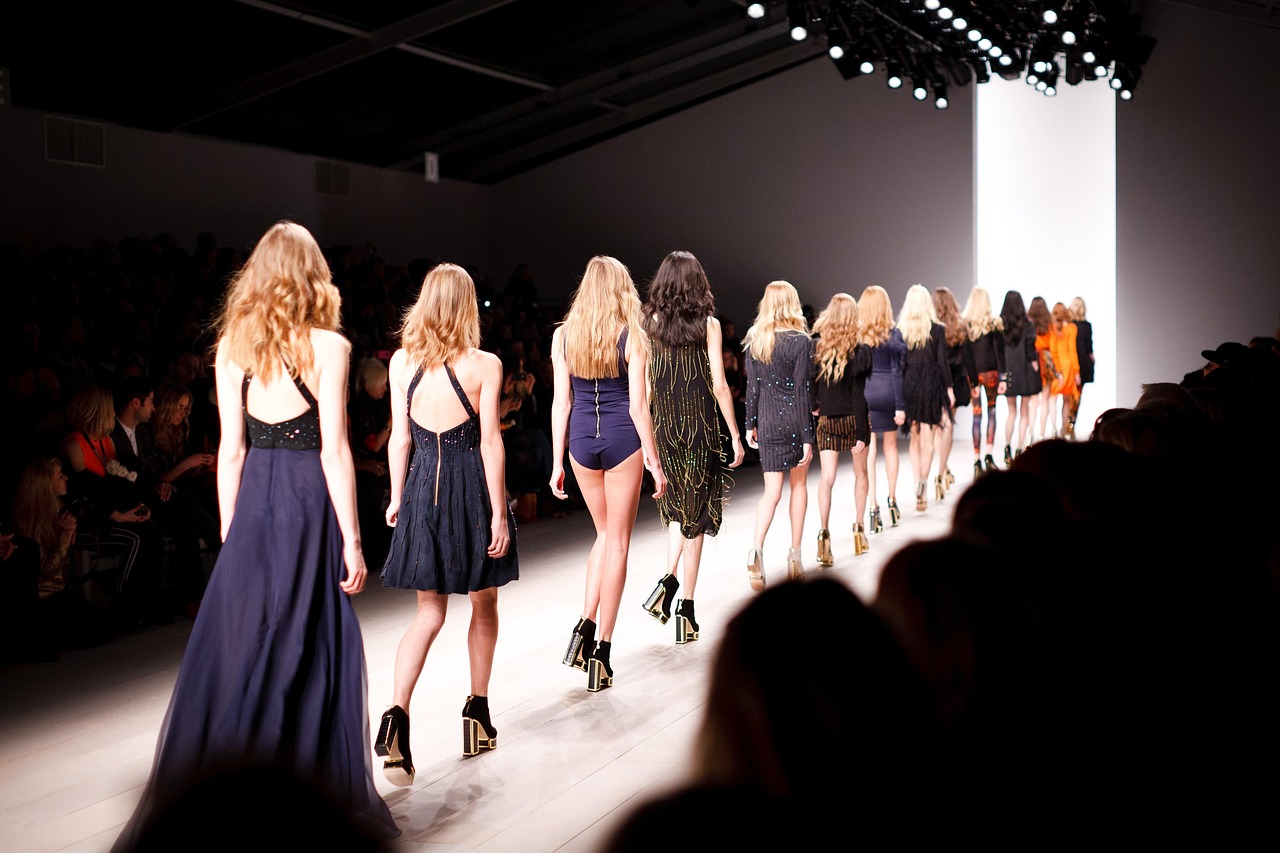Walking down the catwalk in a spotlight of flashing cameras is a dream for many. But becoming a runway model takes more than just good looks. It’s a craft built through discipline, practice, and smart choices. Knowing how to become a runway model means understanding the industry’s expectations, mastering the skills that make a walk unforgettable, and preparing your mind and body for the demands of fashion weeks, fittings, and global exposure.
Developing the Right Physical Presence
Runway modeling has specific physical criteria. While beauty is subjective in editorial and commercial work, runway modeling usually calls for a lean, tall frame. The industry standard for female models is typically between 5’9” and 6’0”, with measurements close to 34-24-34 inches. For male models, heights usually range from 6’0” to 6’3”, with a fit yet lean physique.
I had to accept that these requirements weren’t about vanity but about the needs of designers. Clothes need to fit and move consistently. Runway modeling is about showcasing the design, not overpowering it with personality or body curves that distract from the garment’s silhouette.
If your body naturally meets these requirements, that’s a great start. If not, it doesn’t mean all hope is lost, but it may mean pursuing different types of modeling or finding agencies with more inclusive rosters.
Training Your Walk and Presence
I spent hours watching fashion shows on video and practicing my walk in the mirror. The walk is everything in runway. It’s not simply strolling down a hallway. It’s power, grace, rhythm, and attitude, all in perfect sync. You need to appear confident, unaffected, and fierce, while also moving precisely and predictably for photographers and designers.
The walk begins with posture. I kept my chin level, shoulders back, and arms relaxed. Then came the stride, long, deliberate, and in one straight line, like I was walking a tightrope. Heels first, with a natural sway in the hips (for women) and an upright, commanding presence (for men).
I also practiced with different types of shoes, especially heels and platforms. You have to move like the shoes are part of your body. At castings or runway rehearsals, tripping or hesitating can cost you the job.
Building a Strong Portfolio
Even runway models need a well-crafted portfolio. While editorial shots show off your range and expressions, your runway portfolio should highlight full-body shots, clean lines, and evidence of your ability to showcase clothes without overpowering them.
I focused on variety, different styles, designer looks, runway shots from training schools or smaller shows, and a few dramatic high-fashion poses. Agencies and casting directors want to see that you know how to carry garments, not just look good in a still image.
Working with photographers who understood fashion helped me create images that didn’t just capture my face but told a story with posture, body tension, and motion.
Finding the Right Agencies
To figure out how to become a runway model, finding the right agency was one of my most important steps. Not every agency focuses on runway work. Some are better known for commercial or print modeling. I researched top modeling agencies that consistently booked shows during Fashion Week and had strong connections with major designers.
I checked their websites, studied their model rosters, and submitted applications with clean digitals: full-body and close-up shots in natural light, no makeup, and fitted clothing. I kept my submission short and professional, listing my measurements and location.
When an agency offered to represent me, I asked about their runway division, casting opportunities, and the types of clients they worked with. A legitimate agency doesn’t charge upfront fees. Instead, they invest in developing you because they believe in your potential.
Maintaining a Healthy Lifestyle
Runway modeling demands physical stamina. Shows can run late into the night, and fittings are often back-to-back. To stay in shape and remain camera-ready, I committed to a lifestyle that supported both my body and my energy levels.
I focused on nutritious meals, not starvation. My goal wasn’t to shrink but to maintain a lean, strong frame. That meant lean protein, complex carbs, vegetables, and a lot of water. Skipping meals led to sluggish walks and poor concentration, two things that don’t work on a runway.
Sleep and skincare were just as important. Puffy eyes, tired posture, or dull skin show up under runway lights. I made sleep a priority and followed a simple but consistent skincare routine.
Taking Advantage of Training Opportunities
I took classes at modeling schools that specialized in runway techniques. Some offered intensive weekend bootcamps, while others had weekly sessions. These programs helped me get used to the runway space, the lighting, and the choreography of a fashion show.
Working with coaches gave me feedback I couldn’t get on my own. They corrected my posture, taught me how to pivot sharply at the end of the catwalk, and helped me command attention with eye contact that was subtle but firm.
One of the most valuable things I learned was how to recover if something goes wrong. A shoe breaks? Keep walking. The lights go out? Stay calm. A strong runway model doesn’t break character, even when chaos happens backstage.
Getting Noticed by Designers
The moment I was signed with an agency, I began auditioning for casting calls. Runway castings are often group sessions, where dozens of models walk for the same role. You may only have five seconds to make an impression. I walked with purpose, kept my energy focused, and projected professionalism even while waiting in line.
Building relationships with up-and-coming designers helped me secure runway opportunities even before I hit the major stages. I attended local fashion shows, networked with stylists, and showed up to every event early, prepared, and respectful.
Those early connections led to invites for larger castings. Some designers even requested me personally after seeing my walk or hearing from another model that I was reliable and easy to work with.
Preparing for Fashion Week
Fashion Week is the dream, but it’s also a marathon. Castings, fittings, rehearsals, makeup calls, and shows happen in rapid succession. Before my first major Fashion Week, I worked on my schedule months in advance. I practiced walking in the styles of the designers I was auditioning for and adjusted my diet and sleep to stay energized for long days.
When I was booked for a show, I treated every detail seriously. I arrived on time, stayed professional backstage, and listened closely to the show director’s instructions. The walk may only last seconds, but the way you handle yourself behind the scenes can make or break future bookings.
Building a Runway Career Beyond the Catwalk
Knowing how to become a runway model means thinking long-term. The most successful runway models evolve. Some become muses for designers, spokespeople for brands, or move into acting, hosting, or entrepreneurship.
I stayed active on social media, but in a way that reflected my brand. I shared behind-the-scenes photos, snapshots of castings and shows, and collaborated with fashion bloggers and makeup artists. This visibility helped agents market me for more shows, and designers felt confident booking someone who understood how to represent their brand both on and off the runway.
Eventually, I began mentoring new models and helping them navigate the same process. That added another layer to my journey and helped me stay connected to the evolving demands of the fashion world.
Mistakes to Avoid on the Path to the Runway
Not every opportunity is a good one. I learned to be cautious with contracts that required upfront payment, offers that seemed too easy, or photographers who promised exposure instead of delivering quality work.
I also avoided trends that didn’t align with the expectations of runway modeling. Too much plastic surgery, extreme dieting, or trying to mold myself into every niche made me less marketable. Instead, I focused on refining my unique strengths.
Missing castings or showing up unprepared was another lesson. Punctuality, professionalism, and polish are more valuable than height or measurements alone.
Final Thoughts
Learning how to become a runway model is not a one-time decision, it’s a path that requires resilience, dedication, and constant self-refinement. It’s not enough to simply walk well. You need to think like a professional, behave like an ambassador, and evolve like an artist.
The runway isn’t just about the clothes. It’s about the energy you bring, the stories you tell without words, and the way you inhabit space with grace and confidence. Whether you’re just starting out or standing in line at your hundredth casting, remember: someone is always watching, and every step is a chance to make it count.

